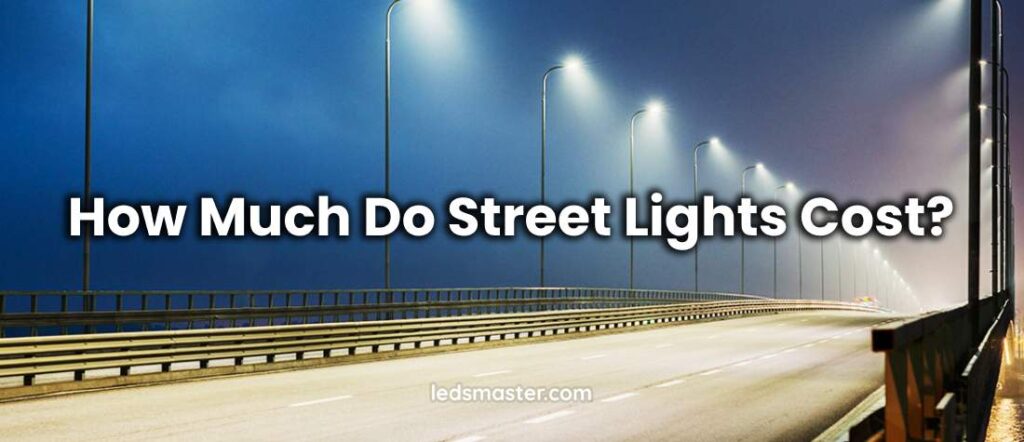Street lights are essential for ensuring safety, visibility, and security in urban and rural areas. Their installation and maintenance, however, come with significant costs. Understanding the different aspects of street light expenses, including purchasing, installation, and operational costs, can help municipalities and businesses make informed decisions. This article delves into these cost factors, offering a comprehensive overview of the financial commitments associated with street lighting.
Let’s take a closer look at the costs associated with purchasing, installing, and operating street lights.
| Cost Component | High-Pressure Sodium (HPS) Lights | Metal Halide Lights | LED Lights |
|---|---|---|---|
| Initial Purchase Cost | $100 – $250 | $150 – $300 | $300 – $800 |
| Installation Cost (per light) | $1,000 – $3,000 | $1,000 – $3,000 | $1,000 – $3,000 |
| Energy Consumption (watts) | 50 – 400 | 70 – 400 | 20 – 150 |
| Monthly Energy Cost (per light) | $10.80 (250W) | $10.80 (250W) | $4.32 (100W) |
| Annual Energy Cost (per light) | $130 | $130 | $52 |
| Maintenance Cost (annual) | $100 – $200 | $100 – $200 | $20 – $50 |
| Lifespan | 20,000 hours (approx. 5 years) | 20,000 hours (approx. 5 years) | 50,000 – 100,000 hours (10-20 years) |
| Total 5-Year Cost of Ownership (per light) | $4,025 | $4,275 | Not applicable |
| Total 20-Year Cost of Ownership (per light) | Not applicable | Not applicable | $3,740 |
Table of Contents
ToggleCost of Purchasing Street Lights
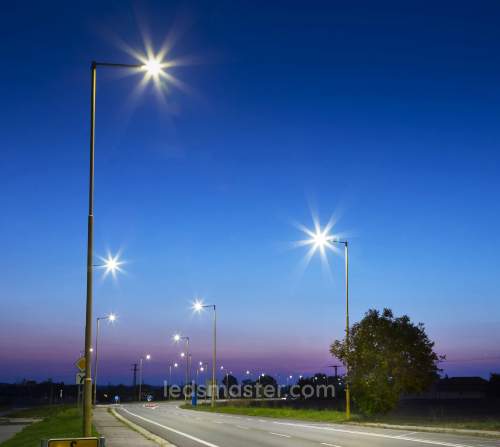 When considering the purchase of street lights, it is essential to account for various types of lighting technology, including traditional high-pressure sodium (HPS) lights, metal halide lights, and modern LED lights. Each type has distinct price ranges influenced by factors such as wattage, quality, and additional features.
When considering the purchase of street lights, it is essential to account for various types of lighting technology, including traditional high-pressure sodium (HPS) lights, metal halide lights, and modern LED lights. Each type has distinct price ranges influenced by factors such as wattage, quality, and additional features.
High-Pressure Sodium (HPS) Lights
HPS lights have been a popular choice for street lighting due to their efficiency and long lifespan. On average, an HPS street light costs between $100 and $250. The price may vary depending on the wattage and the quality of the fixture. Lower wattage HPS lights (e.g., 100 watts) are on the lower end of the price spectrum, while higher wattage lights (e.g., 400 watts) tend to be more expensive.
Metal Halide Lights
Metal halide lights, known for their bright white light, are another traditional option. These lights are generally more expensive than HPS lights, with costs ranging from $150 to $300 per fixture. The higher cost is attributed to their better color rendering and higher light output, making them suitable for areas where visibility and color accuracy are crucial.
LED Lights
LED street lights are increasingly preferred due to their energy efficiency and long lifespan. The initial cost of LED lights is higher than traditional options, typically ranging from $300 to $800 per fixture. However, prices have been decreasing as technology advances and production scales up. The cost of an LED street light can vary significantly based on factors such as wattage, brand, and additional features like dimming capabilities and smart controls.
Cost of Installing Street Lights
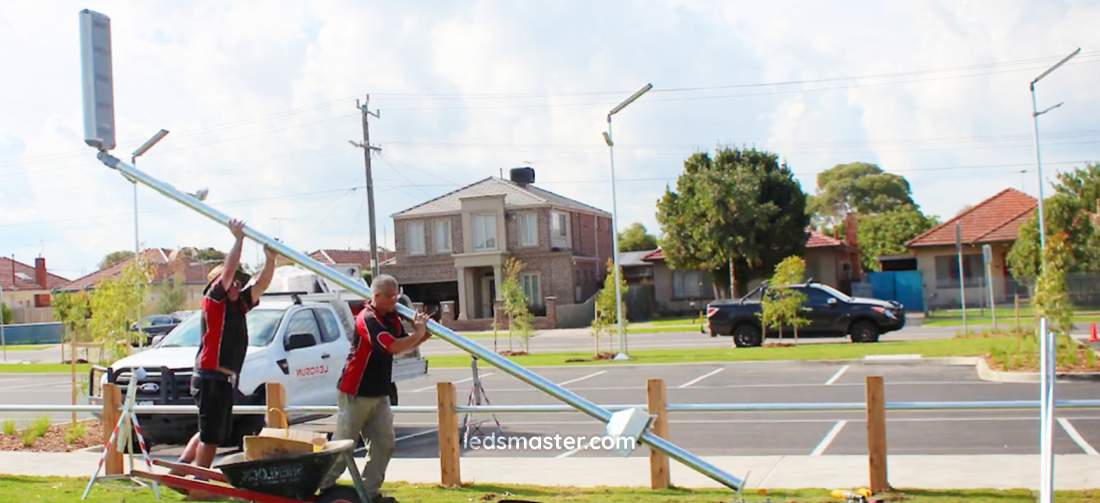
The installation cost of street lights includes several components: labor, equipment, electrical work, and sometimes trenching for new wiring. These costs can vary based on the complexity of the installation, the type of light being installed, and local labor rates.
Labor Costs
Labor is a significant portion of the installation expense. The cost of hiring electricians and other skilled workers can range from $50 to $100 per hour. Installing a single street light can take several hours, depending on the complexity of the job and the working conditions. For example, installing lights in a new development where trenches need to be dug for wiring will be more labor-intensive and time-consuming than replacing existing lights.
Equipment and Electrical Work
The equipment needed for installation, such as lift trucks, concrete bases, and wiring, also contributes to the overall cost. The expense for this equipment can range from $500 to $1,000 per street light. Electrical work, including connecting the lights to the power grid, adds to the cost. This part of the installation can cost between $200 and $500 per light, depending on the complexity of the electrical connections.
Trenching and Site Preparation
For new installations, trenching for underground wiring and site preparation can significantly increase costs. Trenching costs can range from $10 to $20 per foot, depending on the terrain and soil conditions. If a site requires extensive preparation, such as clearing vegetation or leveling uneven ground, additional costs will be incurred.
Total Installation Costs
In total, the installation cost for a single street light can range from $1,000 to $3,000, depending on the factors mentioned above. For large projects, such as illuminating an entire street or neighborhood, economies of scale can sometimes reduce the per-light installation cost.
Cost of Running Street Lights
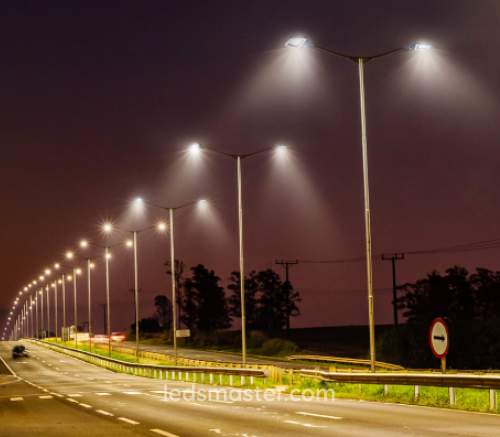 Once installed, the ongoing operational costs of street lights include energy consumption, maintenance, and replacement of parts. These costs vary based on the type of light and the efficiency of the fixtures.
Once installed, the ongoing operational costs of street lights include energy consumption, maintenance, and replacement of parts. These costs vary based on the type of light and the efficiency of the fixtures.
Energy Consumption
Energy consumption is a major component of the running costs. The electricity cost of running a street light depends on its wattage and the local cost of electricity, usually measured in kilowatt-hours (kWh).
High-Pressure Sodium (HPS) Lights
A typical HPS street light consumes between 50 and 400 watts, with an average consumption of around 250 watts. Assuming the lights operate for an average of 12 hours per night, an HPS light consuming 250 watts would use approximately 90 kWh per month. With an average electricity cost of $0.12 per kWh, the monthly energy cost for one HPS light would be around $10.80.
Metal Halide Lights
Metal halide lights have similar energy consumption to HPS lights, typically ranging from 70 to 400 watts. An average metal halide light consuming 250 watts would also use about 90 kWh per month, resulting in a similar monthly energy cost of approximately $10.80.
LED Lights
LED lights are significantly more energy-efficient than HPS and metal halide lights. A typical LED street light consumes between 20 and 150 watts, with an average consumption of around 100 watts. Assuming 12 hours of operation per night, an LED light consuming 100 watts would use approximately 36 kWh per month. At an electricity cost of $0.12 per kWh, the monthly energy cost for one LED light would be around $4.32, representing substantial savings compared to traditional lighting options.
Maintenance Costs
Maintenance is another ongoing expense for street lights. This includes routine inspections, cleaning, and replacing components such as bulbs, ballasts, and fixtures.
High-Pressure Sodium (HPS) and Metal Halide Lights
HPS and metal halide lights require more frequent maintenance than LED lights. Bulbs typically need to be replaced every 2 to 3 years, and ballasts may need replacement every 5 to 7 years. The cost of replacing an HPS or metal halide bulb ranges from $20 to $50, while ballasts can cost between $50 and $150. Factoring in labor costs for maintenance, the annual maintenance cost for traditional street lights can range from $100 to $200 per light.
LED Lights
LED street lights have a longer lifespan and lower maintenance requirements. LED fixtures typically last between 50,000 and 100,000 hours, translating to 10 to 20 years of operation. This significantly reduces the frequency of replacements and associated labor costs. Annual maintenance costs for LED lights are generally lower, ranging from $20 to $50 per light, primarily for routine inspections and cleaning.
Cost of Replacing Street Lights
Replacing street lights involves not only the purchase of new fixtures but also the removal of existing ones, installation of the new lights, and potential upgrades to the electrical infrastructure. This process can be complex and costly, but it is often necessary to improve energy efficiency, enhance illumination, and reduce maintenance requirements.
Removal and Disposal Costs
The first step in replacing street lights is removing the old fixtures. This process can vary in complexity depending on the type of light being removed and the condition of the existing infrastructure. On average, the cost of removing an old street light ranges from $200 to $500 per fixture. This cost includes labor, equipment, and disposal fees. In some cases, the disposal of old fixtures, especially those containing hazardous materials like mercury vapor, may incur additional charges.
Upgrading Electrical Infrastructure
Replacing street lights, particularly when upgrading to more advanced lighting technologies like LEDs, may require upgrades to the electrical infrastructure. This can include installing new wiring, upgrading transformers, and ensuring that the electrical system can handle the new lights’ power requirements. The cost of these upgrades varies widely based on the complexity of the existing infrastructure and the requirements of the new lighting system. On average, electrical upgrades can add $500 to $2,000 per street light to the overall replacement cost.
Installation of New Fixtures
The installation cost for new street lights remains consistent with initial installations, ranging from $1,000 to $3,000 per light. This includes labor, equipment, and connecting the new lights to the power grid. For large-scale replacement projects, economies of scale may reduce the per-light installation cost.
Total Replacement Cost
The total cost of replacing street lights is a combination of removal, electrical upgrades, and the installation of new fixtures. For example, replacing a single high-pressure sodium (HPS) light with an LED light could involve $300 for removal, $1,000 for electrical upgrades, and $2,000 for installing the new LED fixture. This brings the total replacement cost to around $3,300 per light. For large-scale projects, the overall cost can be substantial but is often justified by the long-term savings in energy and maintenance.
How to Save Street Light Costs?
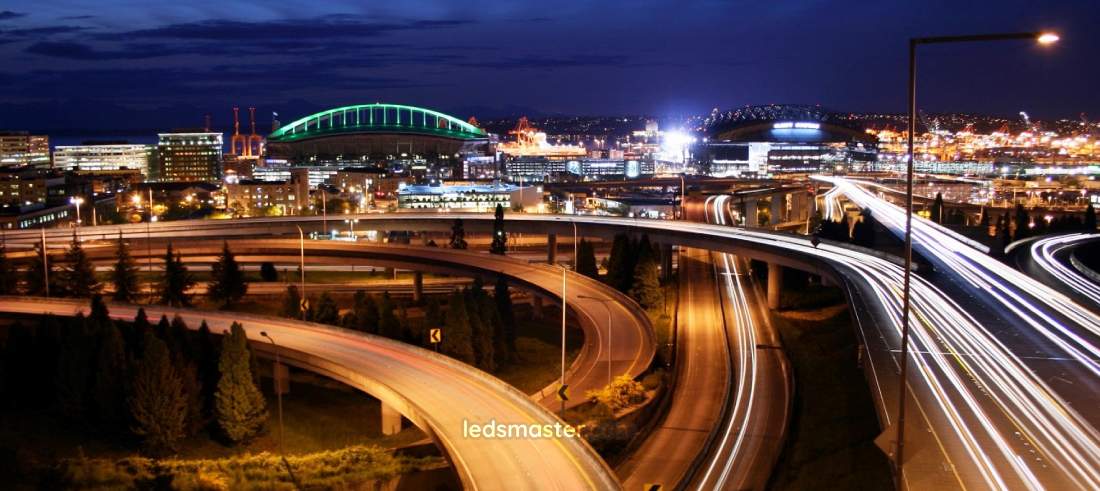
Street lighting represents a significant expenditure for municipalities and businesses, but numerous strategies can help reduce these costs without compromising safety and visibility. Implementing cost-saving measures can lead to substantial long-term savings. Here are some effective ways to save on street light costs, explained in detail.
Transition to LED Lighting
One of the most effective ways to reduce street light costs is to transition from traditional lighting technologies, such as high-pressure sodium (HPS) and metal halide lights, to LED lights. LED street lights offer several advantages that can lead to significant cost savings over time.
LED lights are known for their energy efficiency. They consume significantly less energy compared to traditional lights, which directly translates to lower electricity bills. For example, an LED light consuming 100 watts can replace a 250-watt HPS light, resulting in a substantial reduction in energy consumption. This reduction can lead to savings of up to 60-70% on energy costs, making LED lights a financially attractive option.
In addition to energy efficiency, LEDs have a longer lifespan. While HPS and metal halide lights typically last between 10,000 and 20,000 hours, LED lights can last between 80,000 and 120,000 hours. This extended lifespan means that LED lights require less frequent replacements, reducing maintenance costs and the associated labor expenses. Over time, the reduced need for maintenance and replacements can lead to considerable savings.
LED lights also offer better illumination and color rendering, which can improve safety and visibility on streets and in public areas. This improved quality of light can reduce accidents and enhance the overall security of an area, indirectly contributing to cost savings by potentially lowering public safety expenditures.
Implement Smart Lighting Controls
Smart lighting systems use sensors, timers, and advanced control mechanisms to optimize the operation of street lights. Smart lighting controls can adjust the brightness of street lights based on real-time conditions. For example, lights can be dimmed during late-night hours when traffic is minimal and increased during peak hours or adverse weather conditions. This dynamic adjustment of light levels can lead to significant energy savings.
Motion sensors can also be integrated into street lighting systems to further reduce energy consumption. Lights equipped with motion sensors can operate at a lower brightness level when no activity is detected and automatically increase brightness when movement is detected. This approach ensures that lights are only at full brightness when needed, reducing unnecessary energy use.
Additionally, smart lighting systems can provide real-time data on the status and performance of street lights. This information can be used for proactive maintenance, allowing for timely repairs and reducing the likelihood of lights being out of service. By maintaining a more efficient and reliable lighting system, municipalities can avoid the higher costs associated with emergency repairs and extended outages.
Optimize Lighting Design
Proper lighting design ensures that the number and placement of lights are efficient and effective, providing adequate illumination while minimizing energy use and installation costs.
Conducting a lighting audit is an essential first step in optimizing lighting design. A lighting audit evaluates the current lighting system, identifies areas of over-illumination or under-illumination, and recommends improvements. By addressing these issues, municipalities can ensure that lights are only installed where they are needed and that they provide the appropriate level of illumination.
Using advanced lighting design software can help in planning and implementing an optimized lighting system. This software can simulate different lighting scenarios, allowing designers to evaluate the effects of various lighting configurations before installation. By modeling different options, municipalities can identify the most cost-effective and efficient lighting design.
Choosing the right light fixtures and poles is also crucial for optimizing lighting design. Selecting fixtures with the appropriate beam angles and light distribution patterns ensures that light is directed where it is needed, reducing light pollution and energy waste. Additionally, using poles of the correct height and spacing can maximize the effectiveness of each light, further enhancing energy efficiency.
Utilize Renewable Energy Sources
Incorporating renewable energy sources into street lighting systems can also lead to significant cost savings. Solar-powered street lights, in particular, are an increasingly popular option for reducing energy costs and promoting environmental sustainability.
Solar-powered street lights use photovoltaic panels to convert sunlight into electricity, which is stored in batteries and used to power the lights at night. By relying on renewable solar energy, these lights eliminate the need for electricity from the grid, reducing energy costs to virtually zero. While the initial cost of solar-powered street lights can be higher than traditional lights, the long-term savings on energy costs can make them a cost-effective solution.
In addition to cost savings, solar-powered street lights offer other benefits. They are particularly useful in remote or off-grid locations where extending the electrical grid would be expensive or impractical. Solar lights can be installed without the need for extensive trenching or wiring, reducing installation costs and minimizing disruption to the surrounding area.
Governments and municipalities may also be eligible for grants, incentives, or rebates for using renewable energy sources. These financial incentives can offset the initial investment in solar-powered street lights, making the transition to renewable energy even more attractive.
Regular Maintenance and Upgrades
Regular maintenance and timely upgrades are essential for ensuring the efficiency and longevity of street lighting systems. Implementing a proactive maintenance schedule can prevent small issues from becoming major problems, reducing repair costs and extending the lifespan of the lights.
Regular cleaning of light fixtures is important to maintain their efficiency. Dirt and debris can accumulate on fixtures, reducing their light output and increasing energy consumption. Routine cleaning ensures that lights operate at their optimal performance levels, providing the necessary illumination while minimizing energy use.
Replacing outdated or inefficient components with modern, energy-efficient alternatives can also lead to significant cost savings. For example, upgrading to LED bulbs or fixtures, even within existing lighting systems, can improve energy efficiency and reduce maintenance requirements. Similarly, replacing old ballasts and transformers with more efficient models can enhance the overall performance of the lighting system.
Implementing a central management system for street lighting can streamline maintenance efforts. A central management system allows for remote monitoring and control of street lights, providing real-time data on their status and performance. This system can alert maintenance teams to issues such as burnt-out bulbs or malfunctioning fixtures, enabling prompt repairs and reducing downtime. By maintaining a well-functioning lighting system, municipalities can avoid the higher costs associated with emergency repairs and extended outages.
Conclusion
The cost of street lights encompasses several components: purchasing, installation, and ongoing operational expenses. While traditional HPS and metal halide lights have lower initial costs, they incur higher energy and maintenance expenses over their lifetimes. In contrast, LED lights, with their higher initial cost, offer significant savings in energy and maintenance, making them a cost-effective option in the long run. By understanding these costs, municipalities and businesses can make informed decisions about the most suitable street lighting solutions for their needs, balancing initial investments with long-term savings.

